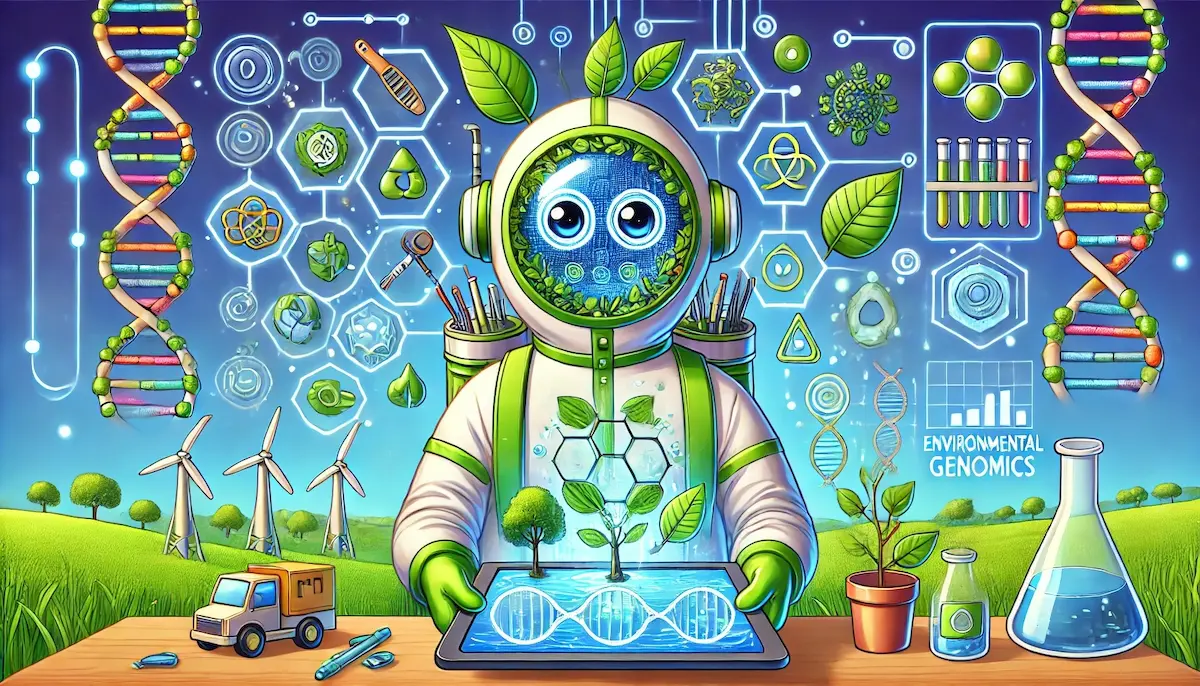Environmental genomics is the study of the genetic material from entire communities of organisms within their natural environments. Unlike traditional genomics, which typically focuses on individual species in isolation, environmental genomics explores the diversity, interactions, and functions of all organisms in a given habitat, including microbes, plants, animals, and other life forms. This approach provides a comprehensive understanding of how ecosystems function and how they respond to environmental changes, offering insights that are critical for conservation, climate science, and environmental management.
The Evolution of Environmental Genomics
Environmental genomics, often referred to as metagenomics, began to gain prominence in the early 2000s with advances in DNA sequencing technology. Traditionally, studying environmental samples required culturing organisms in the lab, a method that only works for a small fraction of microbial species. Metagenomics bypasses this limitation by directly extracting and sequencing DNA from environmental samples, such as soil, water, or air. The pioneering work on the Sargasso Sea metagenome in 2004 marked a significant milestone, revealing an unexpected level of microbial diversity in the ocean.
Since then, environmental genomics has expanded to encompass various ecosystems, including terrestrial, marine, freshwater, and extreme environments. This field has been propelled by the development of high-throughput sequencing technologies and bioinformatics tools that can handle the vast amounts of data generated by these studies.
Key Areas of Environmental Genomics
Metagenomics
Metagenomics involves the direct sequencing of DNA from environmental samples, allowing researchers to identify and characterize the genetic material of all organisms in a community. This approach provides a snapshot of the microbial diversity in an ecosystem, revealing the presence of previously unknown species and uncovering the genetic potential of microbial communities for processes like nutrient cycling, decomposition, and symbiosis.
Environmental Transcriptomics
Environmental transcriptomics, or metatranscriptomics, focuses on the study of RNA sequences in environmental samples. By analyzing RNA, scientists can determine which genes are actively being expressed in an ecosystem at a given time. This approach helps to understand the functional roles of organisms in their natural habitats and how they respond to environmental stimuli such as temperature changes, pollution, or nutrient availability.
Environmental Metabolomics
Environmental metabolomics studies the small molecules, or metabolites, produced by organisms in an ecosystem. By analyzing the chemical compounds present in an environment, researchers can gain insights into the metabolic activities and interactions of different species. Metabolomics provides valuable information about how organisms adapt to their environment, including how they utilize resources, interact with one another, and respond to stressors.
Comparative Genomics
Comparative genomics in environmental studies involves comparing the genomes of organisms from different environments or the same environment over time. This approach helps identify genetic adaptations to specific environmental conditions, such as salinity, pH, temperature, or nutrient availability. It also aids in understanding the evolutionary processes that drive biodiversity and ecosystem resilience.
The Impact of Environmental Genomics
Environmental genomics has far-reaching implications for biodiversity conservation, ecosystem management, climate change research, and biotechnology.
Biodiversity and Conservation
Environmental genomics provides a powerful tool for assessing biodiversity, particularly for detecting and cataloging species that are difficult to observe or culture. This approach is invaluable for monitoring endangered species, tracking invasive species, and understanding the genetic diversity of ecosystems. By revealing the hidden diversity of life in various habitats, environmental genomics aids in the conservation of ecosystems and the development of strategies to protect biodiversity.
Ecosystem Function and Health
Understanding the genetic composition and functional potential of organisms in an ecosystem is crucial for assessing ecosystem health and resilience. Environmental genomics allows scientists to monitor changes in microbial communities that can indicate shifts in ecosystem function, such as nutrient cycling or carbon sequestration. This information is essential for managing ecosystems sustainably and predicting how they will respond to environmental changes, such as pollution, habitat destruction, or climate change.
Climate Change Research
Environmental genomics plays a critical role in studying the impacts of climate change on ecosystems. By analyzing how microbial communities respond to changing temperatures, ocean acidification, or altered precipitation patterns, researchers can predict the effects of climate change on ecosystem services, such as soil fertility, water quality, and carbon storage. This knowledge is vital for developing strategies to mitigate the impacts of climate change on natural and human-managed ecosystems.
Biotechnology and Industry
The genetic diversity uncovered by environmental genomics holds enormous potential for biotechnology. Novel genes and metabolic pathways discovered in extreme environments, such as deep-sea vents or acidic hot springs, can lead to the development of new enzymes, biofuels, pharmaceuticals, and other bioproducts. Environmental genomics also informs bioremediation efforts, where microbes are used to clean up pollutants, by identifying the organisms and pathways best suited for breaking down environmental contaminants.
Challenges and Future Directions
Despite its many successes, environmental genomics faces challenges, including the complexity of environmental samples, the vast amounts of data generated, and the need for advanced bioinformatics tools to analyze and interpret this data. Additionally, there is a need for standardized methods to ensure comparability of results across studies and environments.
Looking ahead, advances in single-cell genomics, long-read sequencing technologies, and machine learning are expected to further enhance our ability to study environmental genomes. These tools will enable more detailed analyses of microbial communities, their interactions, and their roles in ecosystem processes.
Environmental genomics is a rapidly advancing field that offers critical insights into the functioning of ecosystems and their responses to environmental changes. As technology continues to evolve, environmental genomics will play an increasingly important role in addressing global challenges related to biodiversity, climate change, and sustainable development.
Blockfine thanks you for reading and hopes you found this article helpful.
